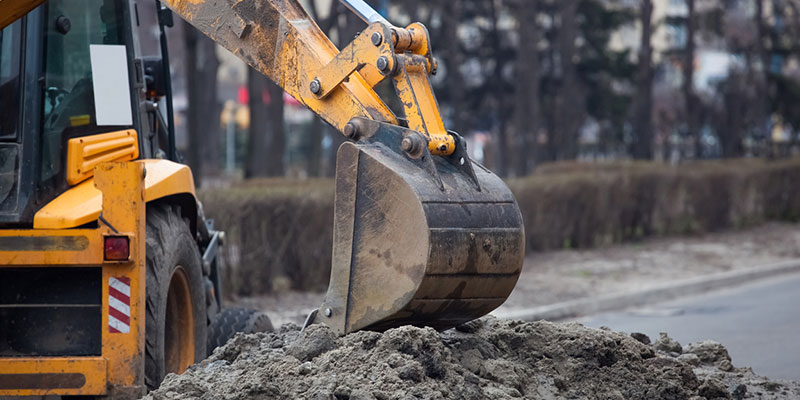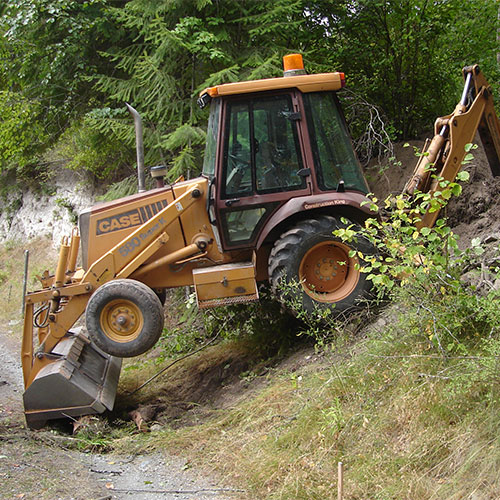Revealing the Art of Excavation: Pro Tips for Safe and Efficient Excavating
As soil is transformed and planet is moved, the complexities of excavation expose themselves, requiring a keen understanding of devices, soil make-up, safety and security methods, and environmental factors to consider. The proficiency required to browse these aspects successfully can imply the difference in between a successful excavation task and a possible disaster.
Value of Proper Devices
To make sure the safety and security and performance of any kind of excavation job, making use of the appropriate devices is vital. Excavation jobs differ in range and intricacy, varying from little residential landscape design tasks to large-scale building and construction undertakings.
Excavators are fundamental pieces of machinery in any type of excavating operation. These functional devices come in various sizes to match various task needs. Mini excavators are perfect for smaller sized jobs, while larger excavators take on much more comprehensive jobs successfully. Backhoes are an additional crucial tools kind, integrating the functions of a loader and an excavator in one equipment. They are beneficial for jobs requiring adaptability and maneuverability.
Excavators stand out in jobs that call for pressing big amounts of soil or particles. By investing in the proper tools, excavation projects can be completed safely, on time, and with accuracy.
Understanding Dirt Structure
A thorough grasp of dirt composition is essential for implementing excavation projects with accuracy and safety. Comprehending the various kinds of dirt is important as it directly influences excavation techniques, equipment choice, and total project efficiency.
Sand fragments are the biggest and provide great water drainage yet supply little communication. Silt fragments are smaller sized than sand but larger than clay, supplying moderate drainage and communication. Clay bits are the tiniest and provide high communication but poor water drainage. Organic issue, such as rotting plant product, impacts soil fertility and stability.
Before starting excavation, performing soil tests to establish its structure and attributes is essential. This details helps in selecting the appropriate equipment, carrying out precaution, and developing excavation strategies tailored to the particular soil conditions - lancaster excavation. By comprehending soil make-up, excavation professionals can boost job end results while making certain security and adherence to finest techniques
Security Steps and Procedures
Understanding dirt structure is the cornerstone upon which precaution and protocols for excavation tasks are developed, making certain the health of workers and the success of the undertaking. When it concerns safety throughout excavation, there are numerous crucial steps that need to be applied to minimize dangers and avoid accidents.
Firstly, prior to any kind of excavating starts, a thorough assessment of the website should be conducted to recognize any type of possible risks such as below ground energies, unpredictable dirt conditions, or close-by structures that could posture a threat. It is important to have a qualified individual manage the excavation procedure to make sure that all security procedures are adhered to strictly.
Additionally, all employees included in the excavation should be appropriately educated in secure excavating methods and the appropriate operation of equipment. By sticking to these safety procedures and protocols, excavation tasks can be completed successfully and without event.
Efficient Excavation Preparation
When getting started on an excavation job, meticulous planning is Recommended Reading crucial to guarantee performance, security, and successful outcomes. Reliable excavation planning entails a number of key steps that are critical for the smooth blog implementation of the task.
When the website evaluation is full, the next step is to develop a clear timeline and timetable for the excavation activities. This includes figuring out the sequence of jobs, equipment needs, and workforce allocation. Appropriate organizing aids prevent hold-ups and makes sure that the project remains on track.

Furthermore, communication amongst all staff member is vital throughout the preparation phase. Clear directives, regular updates, and reliable sychronisation are necessary for a successful excavation project. By spending time and initiative in thorough preparation, excavation groups can dramatically boost performance, reduce threats, and achieve successful outcomes.

Taking Care Of Environmental Factors To Consider
With raising focus on ecological sustainability in building and construction methods, managing environmental factors to consider has actually ended up being a crucial element of excavation jobs. Excavation tasks have the possible to affect the surrounding environment through soil disintegration, debris runoff, environment disruption, and contamination of water sources. To minimize these risks, it is vital to execute ideal methods that focus on environmental protection.

In addition, proper waste management is essential to avoid soil and water contamination. Implementing treatments for the disposal of unsafe materials, recycling of waste materials, and decreasing making use of harmful chemicals can significantly decrease the ecological effect of excavation projects. By integrating these practices into excavation planning and execution, construction firms can ensure that their jobs are not only safe and effective yet likewise environmentally accountable.
Conclusion
To conclude, grasping the art of excavation calls for a comprehensive understanding of proper equipment, soil structure, precaution, and efficient planning. By complying with these guidelines and taking into consideration ecological variables, excavations can be carried out safely and effectively. It is critical to prioritize security and performance in every digging project to guarantee effective end results.
As soil is transformed and planet is moved, the details of excavation reveal themselves, demanding a keen understanding of equipment, dirt make-up, Learn More Here safety protocols, and environmental factors to consider.To make sure the safety and security and efficiency of any kind of excavation job, making use of the ideal tools is paramount.A detailed understanding of soil composition is basic for performing excavation tasks with accuracy and safety. Recognizing the various types of soil is important as it straight influences excavation techniques, devices choice, and total task effectiveness. By understanding soil composition, excavation experts can improve project end results while ensuring safety and security and adherence to ideal methods.